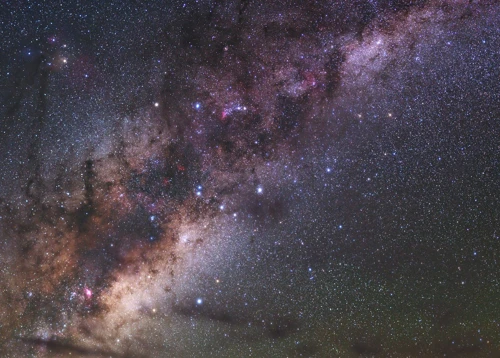Have you ever looked up at the night sky and wondered about the vastness of the universe? Well, prepare to be amazed as we embark on a journey to study the Milky Way Galaxy, our cosmic home. Stretching across 100,000 light-years, the Milky Way is a majestic spiral galaxy filled with billions of stars, planets, and other celestial objects. In this article, we will delve into the formation and evolution of our galaxy, explore its intricate structure, delve into the various techniques used to study it, and uncover the mysteries of its stellar populations, as well as the enigmatic presence of dark matter and dark energy. Get ready to expand your cosmic knowledge and marvel at the wonders of the Milky Way.
The Formation of the Milky Way
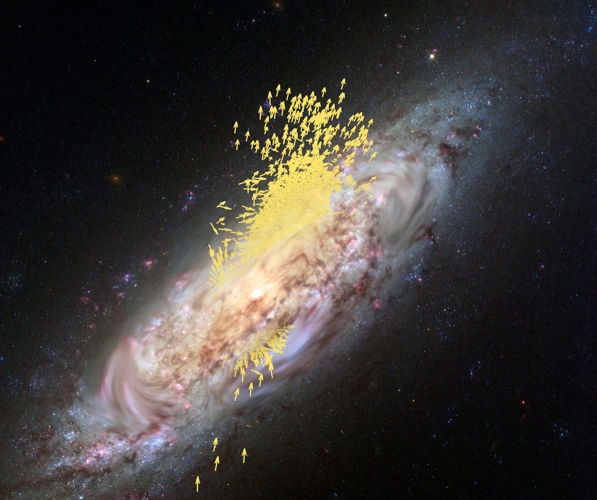
The Formation of the Milky Way is a captivating tale that begins billions of years ago. The early origins of our galaxy can be traced back to the Big Bang, where matter and energy were created. As the universe expanded and cooled, regions of higher density formed, giving rise to the seeds of galaxy formation. These seeds eventually evolved into protogalactic clouds, which are vast conglomerations of gas and dust. Within these clouds, gravity played a crucial role in pulling materials together, leading to the birth of stars and galaxies. The Milky Way emerged through a process known as hierarchical merging, where smaller dwarf galaxies merged over time to form a larger, more massive galaxy. This process of galactic evolution is still ongoing, as the Milky Way continues to interact and merge with smaller satellite galaxies. To gain a deeper understanding of the formation and evolution of galaxies, scientists continue to study the connection between galaxies and star formation, as well as investigate the origins of irregular galaxies. The study of galaxy formation is a fascinating field of research that sheds light on the intricate mechanisms that shape our cosmic home.
1.1 Early Origins
1.1 Early Origins:
The early origins of the Milky Way trace back to the aftermath of the Big Bang. In the early universe, the distribution of matter and energy was not uniform. Tiny fluctuations in density eventually led to the formation of protogalactic clouds, which contained a mix of gas and dust. Within these clouds, gravity began to pull the materials together, causing them to collapse and form dense, rotating structures called protogalactic disks. These disks were the birthplaces of stars and the building blocks of galaxies. Over time, the protogalactic disks continued to evolve and mature, undergoing processes such as accretion and mergers. These events led to the growth and expansion of the Milky Way, incorporating material from surrounding galaxies and further shaping its structure. Investigating the early origins of the Milky Way provides valuable insights into the larger picture of galaxy formation and evolution. By studying the processes that occurred during this crucial period, scientists can better understand the formation and development of galaxies in general. To learn more about the formation and evolution of galaxies, you can refer to our previous article on formation and evolution of galaxies.
1.2 Galactic Evolution
Galactic evolution is a complex and dynamic process that shapes the structure and composition of galaxies over time. In the case of the Milky Way, its evolution is influenced by various factors such as interactions with other galaxies, mergers, and the ongoing process of star formation. One key aspect of galactic evolution is the interaction and merging of galaxies, which can dramatically alter their shape and size. These interactions can trigger intense bursts of star formation and result in the formation of new stellar populations. Additionally, the process of galaxy mergers can lead to the growth of supermassive black holes at the center of galaxies. The study of the connection between galaxies and star formation is vital in understanding the evolution of galaxies. By examining galactic evolution, astronomers can gain insights into the history and origins of irregular galaxies, shedding light on their unique properties and characteristics. Investigating the mechanisms that drive galactic evolution is an ongoing endeavor that continues to uncover the secrets of our cosmic neighborhood.
The Structure of the Milky Way
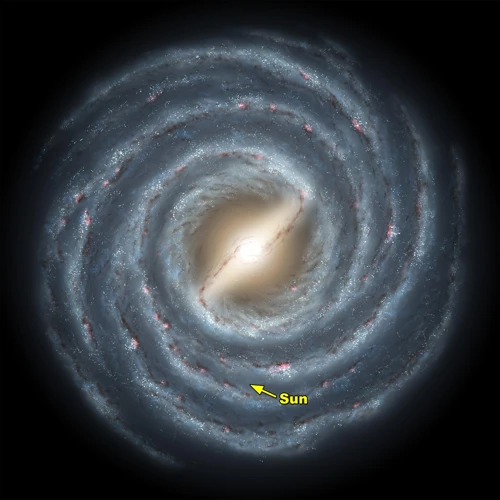
The Structure of the Milky Way is a remarkable tapestry of stars, dust, and gas, stretching across vast distances. At the core of our galaxy lies a dense, compact region known as the Galactic Center. Within the Galactic Center resides a supermassive black hole, known as Sagittarius A*. This celestial behemoth exerts a powerful gravitational pull, influencing the motion of nearby stars. Surrounding the Galactic Center is a disc-like structure, aptly named the Galactic Disc. The disc is composed of spiral arms, which extend outward from the center and wrap around the galaxy in a graceful pattern. These spiral arms are regions of increased stellar density, where stars are born and stellar activity is prominent.
At the edges of the disc, a spherical region called the Galactic Halo can be found. The Galactic Halo primarily consists of old stars, globular clusters, and dark matter. Dark matter is an invisible substance that exerts gravitational forces, contributing to the overall mass and structure of the galaxy.
To unravel the intricacies of the Milky Way’s structure, scientists employ various observational techniques. These techniques include studying the connection between galaxies and star formation, which provides insight into the formation and evolution of structures within our galaxy. Investigating the origins of irregular galaxies also sheds light on the dynamics of galactic structure. By examining the distribution and movement of stars within the Milky Way, astronomers are uncovering the complex structure that makes our cosmic home truly awe-inspiring.
2.1 Spiral Arms and Disc
The Milky Way Galaxy is characterized by its stunning spiral arms and disc structure. These features play a crucial role in understanding the dynamics and composition of our galactic home. The spiral arms, composed of stars, gas, and dust, curve outward from the galaxy’s central bulge. These arms are not static but rather dynamic and constantly evolving. They are regions of active star formation, where clouds of gas and dust collapse under gravity to form new stars. The spiral arms also act as gravitational wave “traffic jams,” causing matter to accumulate and compress, leading to the formation of massive star clusters. Through studying the spiral arms, scientists can gain insights into the interconnected processes of galaxy formation and star formation. Additionally, the Milky Way’s disc structure, encompassing the spiral arms, contains the majority of its stars. These stars are arranged in a flattened disc-like shape, orbiting the galactic center. The disc provides a wealth of information about stellar populations, age distributions, and chemical compositions. Understanding the structure and dynamics of the spiral arms and disc is crucial for unraveling the complex nature of our galaxy and its connection to star formation within it. To learn more about the connection between spiral arms, star formation, and irregular galaxies, refer to the relevant anchor in this article.
2.2 Galactic Center and Supermassive Black Hole
At the heart of the Milky Way lies its Galactic Center, a region of immense interest and intrigue. Within this central region resides a supermassive black hole, known as Sagittarius A*. This colossal gravitational monster has a mass equivalent to millions of suns, exerting a powerful pull on nearby objects. The presence of this supermassive black hole has profound effects on the surrounding environment. Stars that venture too close can be ripped apart by its intense gravitational forces, contributing to the formation of tidal disruption events. These events emit powerful flares of radiation across the electromagnetic spectrum, allowing astronomers to study the behavior of matter in the strong gravitational field. By analyzing the motion of stars near the Galactic Center, scientists have been able to provide evidence for the existence of Sagittarius A* and measure its mass. The study of the Galactic Center and supermassive black holes is essential for understanding the evolution of galaxies and the role these enigmatic objects play in shaping their surroundings. Investigation into the origins of irregular galaxies can also provide valuable insights into the connection between galaxy formation and the presence of supermassive black holes.
Studying the Milky Way
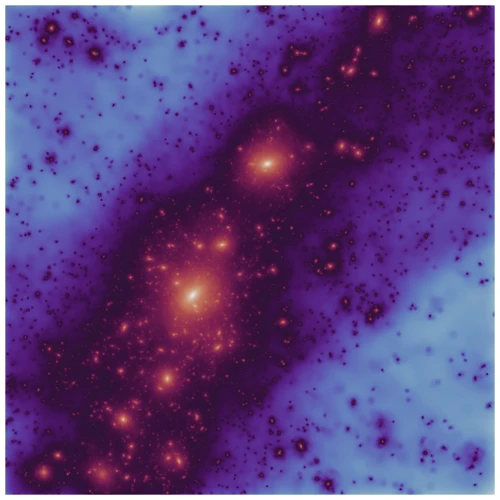
Studying the Milky Way unveils a plethora of observational techniques and cutting-edge technologies that allow scientists to unravel its mysteries. One of the primary methods used is spectroscopy, which analyzes the light emitted or absorbed by celestial objects. By studying the spectrum of light, scientists can determine the composition, temperature, and motion of stars, gas clouds, and other objects within the Milky Way. Ground-based and space-based telescopes play a crucial role in observing and studying the galaxy. Ground-based telescopes, equipped with advanced instruments, capture images and spectra of celestial objects in different wavelengths, enabling scientists to gather valuable data. Space-based telescopes, such as the Hubble Space Telescope, provide unparalleled views of the Milky Way, free from the distortion caused by Earth’s atmosphere. Radio astronomy is another essential tool in studying the galaxy. By detecting radio waves emitted by cosmic objects, scientists can explore regions obscured by dust and gas, unveiling new insights into the structure and dynamics of the Milky Way. Photometry, the measurement of the intensity of light, aids in studying the brightness and variability of stars, allowing astronomers to classify them and understand their evolutionary processes. By employing these observational techniques, scientists continually push the boundaries of knowledge and delve deeper into understanding our cosmic home, the Milky Way.
3.1 Observational Techniques
Observing the Milky Way and unraveling its secrets require a range of sophisticated observational techniques. Astronomers employ various methods to study our cosmic home, each offering unique insights into its composition and behavior. One of the primary techniques used is spectroscopy, which involves analyzing the light emitted or absorbed by celestial objects. By examining the spectrum of light, scientists can determine the chemical composition, temperature, and velocity of stars, galaxies, and other celestial bodies. Another technique is astrometry, which focuses on precisely measuring the positions and motions of celestial objects. This helps in mapping the distribution of stars and determining the structure of the Milky Way. Additionally, astronomers utilize photometry, which involves measuring the intensity or brightness of light. With photometric data, scientists can study the variations in brightness of stars, detect transiting exoplanets, and investigate the properties of variable stars. Other observational techniques include imaging, where telescopes capture detailed images of the Milky Way and its components, and polarimetry, which measures the polarization of light to study magnetic fields and cosmic dust. By employing these diverse techniques, researchers can piece together a comprehensive understanding of the Milky Way’s properties and dynamics, shedding light on its origins and evolution. For more information on investigating the origins of irregular galaxies, please visit this link.
3.2 Ground-based and Space-based Telescopes
When it comes to studying the Milky Way, ground-based and space-based telescopes are invaluable tools that enable scientists to observe and explore our cosmic home in great detail. Ground-based telescopes are located on Earth’s surface and utilize a system of mirrors and lenses to collect and focus light from celestial objects. These telescopes come in various sizes and configurations, ranging from small portable telescopes to massive observatories. They offer advantages such as accessibility, cost-effectiveness, and the ability to be upgraded with advanced technologies. On the other hand, space-based telescopes, like the Hubble Space Telescope, orbit Earth outside the distortion of the atmosphere. This allows them to capture clearer and more detailed images of distant celestial objects. Space-based telescopes also have the advantage of observing a broader range of wavelengths, including X-rays and ultraviolet light, which are blocked by Earth’s atmosphere. Additionally, being outside of Earth’s atmosphere eliminates atmospheric interference, resulting in sharper and more accurate observations. Both ground-based and space-based telescopes have played crucial roles in advancing our knowledge of the Milky Way, allowing us to unravel its mysteries and uncover the secrets hidden within its vast expanse.
3.3 Radio Astronomy and Photometry
Radio Astronomy and Photometry are two powerful techniques used to study the Milky Way Galaxy and unravel its mysteries. Radio astronomy involves observing and analyzing radio waves emitted by celestial objects, allowing scientists to explore various phenomena such as pulsars, quasars, and molecular clouds within the Milky Way. Radio telescopes, equipped with highly sensitive receivers, detect and measure the intensity, frequency, and polarization of these radio waves. This information provides valuable insights into the composition, structure, and dynamics of the galaxy. Photometry, on the other hand, focuses on the measurement of light emitted by celestial objects. By quantifying the brightness and color of stars, galaxies, and nebulae, scientists can determine vital parameters such as temperature, distance, and chemical composition. Photometry techniques range from simple visual observations to sophisticated instruments that measure light across different wavelengths. Through radio astronomy and photometry, researchers can paint a comprehensive picture of the Milky Way and its diverse populations of stars, galaxies, and interstellar matter. These techniques play an instrumental role in expanding our knowledge of our cosmic home and advancing our understanding of the universe.
Milky Way’s Stellar Populations
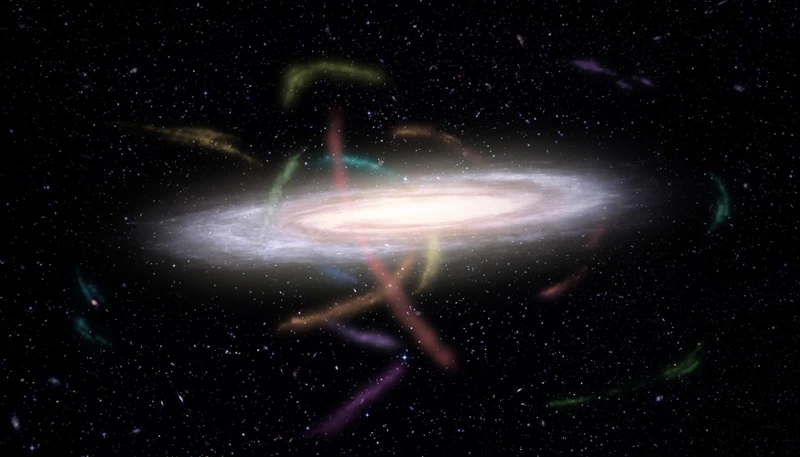
The Milky Way’s Stellar Populations consist of a diverse range of stars that populate our galaxy. One of the main categories of stars in the Milky Way is the Main Sequence Stars. These are stars that are in a stable phase of their life cycle, where they convert hydrogen into helium through nuclear fusion in their cores. Main sequence stars come in various sizes, ranging from small, cool red dwarfs to massive, hot blue stars. Another intriguing population of stars within the Milky Way is the Variable Stars. These stars exhibit changes in their brightness over time due to internal processes or external factors, providing valuable insights into stellar physics and the evolution of stars. Beyond individual stars, the Milky Way is also home to Star Clusters and Nebulas. Star clusters are gravitational gatherings of stars that can be young or old, while nebulas are clouds of gas and dust where new stars are born. These stellar populations serve as stepping stones in unraveling the mysteries of star formation, stellar evolution, and the dynamical processes within our galaxy. Additionally, the study of exoplanets and planetary systems has shed light on the existence of planets orbiting stars other than our own Sun, providing evidence that our galaxy may be teeming with planetary diversity. Exploring the vast array of stellar populations in the Milky Way opens up a world of discovery and reinforces the notion that our cosmic home is a dynamic and ever-evolving entity.
4.1 Main Sequence Stars and Variable Stars
Main sequence stars and variable stars are two fascinating categories of stars that play a crucial role in understanding the stellar populations within the Milky Way. Main sequence stars, also known as dwarf stars, are the most abundant type of star in our galaxy. They are classified based on their spectral type and luminosity, ranging from hot, bright O-type stars to cool, dim M-type stars. These stars are in a state of equilibrium, where the inward force of gravity is balanced by the outward force of nuclear fusion in their cores. Main sequence stars are important because they serve as benchmarks for studying stellar evolution and understanding the lifecycle of stars.
On the other hand, variable stars are stars that exhibit periodic or random changes in brightness over time. These variations in brightness can provide valuable information about a star’s properties, such as size, mass, temperature, and composition. One well-known type of variable star is the Cepheid variable, which pulsates with a regular period directly linked to its intrinsic brightness. By measuring the period of pulsation and comparing it to the observed brightness, astronomers can determine the distance to these stars with remarkable accuracy. This makes them crucial tools for studying the structure and scale of our galaxy.
Studying main sequence stars and variable stars allows astronomers to gain insights into the age, composition, and dynamics of the Milky Way. The abundance of main sequence stars provides valuable information about the stellar population and the overall evolution of our galaxy. Variable stars, with their unique behavior, help astronomers measure cosmic distances and map out the structure of the Milky Way. By observing and studying these stellar objects, scientists can unravel the mysteries of our cosmic home and deepen our understanding of the vast expanse of the universe.
4.2 Star Clusters and Nebulas
Star clusters and nebulae are captivating features of the Milky Way that provide valuable insights into the formation and evolution of stars. Star clusters are groups of stars that are gravitationally bound together, forming a close-knit community. There are two main types of star clusters: open clusters and globular clusters. Open clusters are relatively young and contain a few hundred to a few thousand stars. They are typically found in the spiral arms of the galaxy and often disperse over time as the gravitational interactions with other stars in the Milky Way cause them to slowly break apart. On the other hand, globular clusters are much older and contain hundreds of thousands to millions of stars. These clusters are tightly packed and can be found in the halo surrounding the galactic center of the Milky Way. Nebulae, on the other hand, are vast clouds of gas and dust scattered throughout the galaxy. They come in various forms, such as emission nebulae, reflection nebulae, and dark nebulae. Emission nebulae are regions of ionized gas that emit light due to the presence of hot, young stars. They often appear in vibrant colors, such as the iconic Orion Nebula. Reflection nebulae, on the other hand, do not emit their own light but instead reflect the light of nearby stars, creating a beautiful glow. Dark nebulae are dense regions of dust that block the light from behind, creating eerie patches of darkness against the backdrop of stars. The study of star clusters and nebulae provides astronomers with valuable information about stellar formation, the life cycles of stars, and the chemical composition of the universe. By analyzing their properties and characteristics, astronomers can unravel the intricate processes that shape our galactic neighborhood and gain a deeper understanding of the cosmos.
4.3 Exoplanets and Planetary Systems
Exoplanets and Planetary Systems within the Milky Way Galaxy present a captivating area of study that continues to push the boundaries of our understanding of the cosmos. Exoplanets, also known as extrasolar planets, are planets that orbit stars outside of our solar system. Their discovery has revolutionized our perception of the universe and has opened up a realm of possibilities for the existence of habitable worlds beyond our own. Astronomers employ various techniques to detect exoplanets, including the transit method, where a planet passing in front of its host star causes a slight dip in the star’s brightness, and the radial velocity method, where the gravitational pull of an orbiting planet induces a slight wobble in its host star. These methods, among others, have led to the identification of thousands of exoplanets. With the advancement of technology, scientists have been able to study the composition, atmosphere, and potential habitability of these distant worlds. The study of exoplanets has also sparked the investigation of planetary systems, where multiple planets orbit the same star. These systems exhibit a diverse range of planetary configurations, including rocky planets similar to Earth, gas giants like Jupiter, and even exotic worlds we have yet to fully comprehend. Understanding the formation, composition, and dynamics of exoplanets and planetary systems within the Milky Way provides key insights into the existence and potential for life beyond our own planet.
Milky Way’s Dark Matter and Dark Energy
The Milky Way’s Dark Matter and Dark Energy are two of the most intriguing mysteries in the field of astrophysics. Dark matter, which accounts for about 85% of the total matter in the universe, is a type of matter that does not interact with light or other electromagnetic radiation. Its presence is inferred from its gravitational effects on visible matter within the Milky Way and other galaxies. Scientists have proposed various theories and conducted extensive research to unveil the nature of dark matter, including the possibility that it consists of yet-to-be-discovered particles. Probing the nature of dark matter involves experiments such as underground detectors and particle accelerators to search for these elusive particles. Dark energy, on the other hand, is an even more enigmatic phenomenon. It is a form of energy that permeates the entire universe and is responsible for the acceleration of cosmic expansion. The nature of dark energy remains largely unknown, and scientists are actively studying its properties through observations of distant supernovae, cosmic microwave background radiation, and large-scale structure of the universe. Understanding dark matter and dark energy is crucial in unraveling the ultimate fate and composition of the universe, and continues to be a subject of intense research and investigation.
5.1 Unveiling the Mystery of Dark Matter
Unveiling the Mystery of Dark Matter has been a central focus of research in astrophysics. Dark matter is an elusive substance that does not emit, absorb, or reflect light, making it invisible to our current observational techniques. However, its presence can be inferred through its gravitational effects on visible matter. Scientists estimate that dark matter makes up about 85% of the total matter in the universe, yet its true nature remains unknown. Various hypotheses have been proposed to explain dark matter, ranging from exotic particles to modifications of the laws of gravity. To unravel this cosmic enigma, scientists employ a multitude of ingenious methods. One approach involves studying the rotation curves of galaxies, which track the distribution of mass within a galaxy. Another technique involves analyzing the gravitational lensing effect, where the presence of dark matter causes light to bend as it passes through. Additionally, particle colliders on Earth are used to search for traces of dark matter particles. By combining these observational and experimental techniques, scientists hope to gain deeper insights into the nature of dark matter and its role in shaping the formation and evolution of galaxies. Understanding dark matter is not only key to comprehending the mysteries of the universe but also has implications for our knowledge of fundamental physics.
5.2 Probing the Nature of Dark Energy
Probing the Nature of Dark Energy is a complex and intriguing endeavor in the field of cosmology. Dark energy is a mysterious force that is believed to be responsible for the accelerated expansion of the universe. Understanding its nature is crucial for comprehending the future fate of our universe. Scientists utilize various observational techniques to probe the enigmatic nature of dark energy. One such technique involves the study of Type Ia supernovae, which are stellar explosions used as cosmic distance indicators. By measuring the brightness and redshift of these supernovae, astronomers can infer the expansion rate of the universe and determine the influence of dark energy. Another method involves studying the large-scale structure of the universe through galaxy surveys. These surveys help map the distribution of galaxies and provide insights into the cosmic web and the growth of cosmic structures under the influence of dark energy. Additionally, cosmic microwave background (CMB) radiation, which is leftover radiation from the early universe, provides valuable data for understanding dark energy’s impact on the cosmic timeline. Through these diverse approaches, scientists strive to unravel the nature and properties of dark energy, bringing us closer to uncovering the secrets of our expanding universe.
Conclusion
In conclusion, studying the Milky Way Galaxy unveils a plethora of knowledge about our cosmic home. From its formation and evolution to its intricate structure and stellar populations, each aspect offers valuable insights into the vastness of the universe. Through observational techniques and the use of ground-based and space-based telescopes, scientists have made remarkable discoveries that deepen our understanding of the Milky Way’s mysteries. The exploration of main sequence stars, variable stars, star clusters, nebulae, and exoplanets provides a closer look at the diverse celestial objects that reside within our galaxy. Furthermore, the investigation of dark matter and dark energy continues to unravel the enigmatic forces that shape the universe as we know it. As we delve into the depths of the Milky Way, we gain a profound appreciation for the beauty and complexity of our cosmic neighborhood. The study of our galactic home truly opens up a world of wonder and endless possibilities for further exploration and discovery.
Frequently Asked Questions
1. What are the early origins of the Milky Way?
The early origins of the Milky Way can be traced back to the Big Bang, where matter and energy were created. Over billions of years, protogalactic clouds formed and evolved into what we now know as our galaxy.
2. How did the Milky Way galaxy form?
The Milky Way formed through a process called hierarchical merging. Smaller dwarf galaxies merged together over time, combining their stars, gas, and dust to create a larger, more massive galaxy.
3. What is galactic evolution?
Galactic evolution refers to the ongoing changes and transformations that occur within a galaxy, including the growth in size and mass through mergers with other galaxies.
4. How do scientists study the formation of galaxies?
Scientists study the formation of galaxies through various observational techniques, such as analyzing the distribution of stars and gas within galaxies and investigating the connection between galaxies and star formation.
5. How do galaxies contribute to star formation?
Globally, galaxies provide the fuel for star formation. Gas and dust within galaxies clump together under the force of gravity, forming dense regions where new stars can be born.
6. What role do irregular galaxies play in understanding galaxy formation?
Investigating the origins of irregular galaxies helps scientists better understand the processes involved in galaxy formation. Irregular galaxies have complex shapes and structures, providing valuable insights into the evolution of galaxies.
7. Are there ongoing mergers occurring in the Milky Way?
Yes, the Milky Way is currently experiencing mergers with smaller satellite galaxies. These interactions and mergers play a crucial role in shaping the structure and dynamics of our galaxy.
8. How long does it take for galaxies to form?
Galaxies take billions of years to form through the gradual accumulation of matter, the merging of smaller galaxies, and the evolution of star populations within them.
9. Can we observe galaxy formation in real-time?
Observing galaxy formation in real-time is challenging due to the long timescales involved. However, studying the early universe and the nearby galaxies provides valuable clues about the processes and conditions that led to galaxy formation.
10. Are all galaxies formed in the same way?
No, galaxies can form through various mechanisms, including hierarchical merging, gas accretion from the intergalactic medium, and interactions with other galaxies. The formation process can vary depending on the environment and initial conditions.

